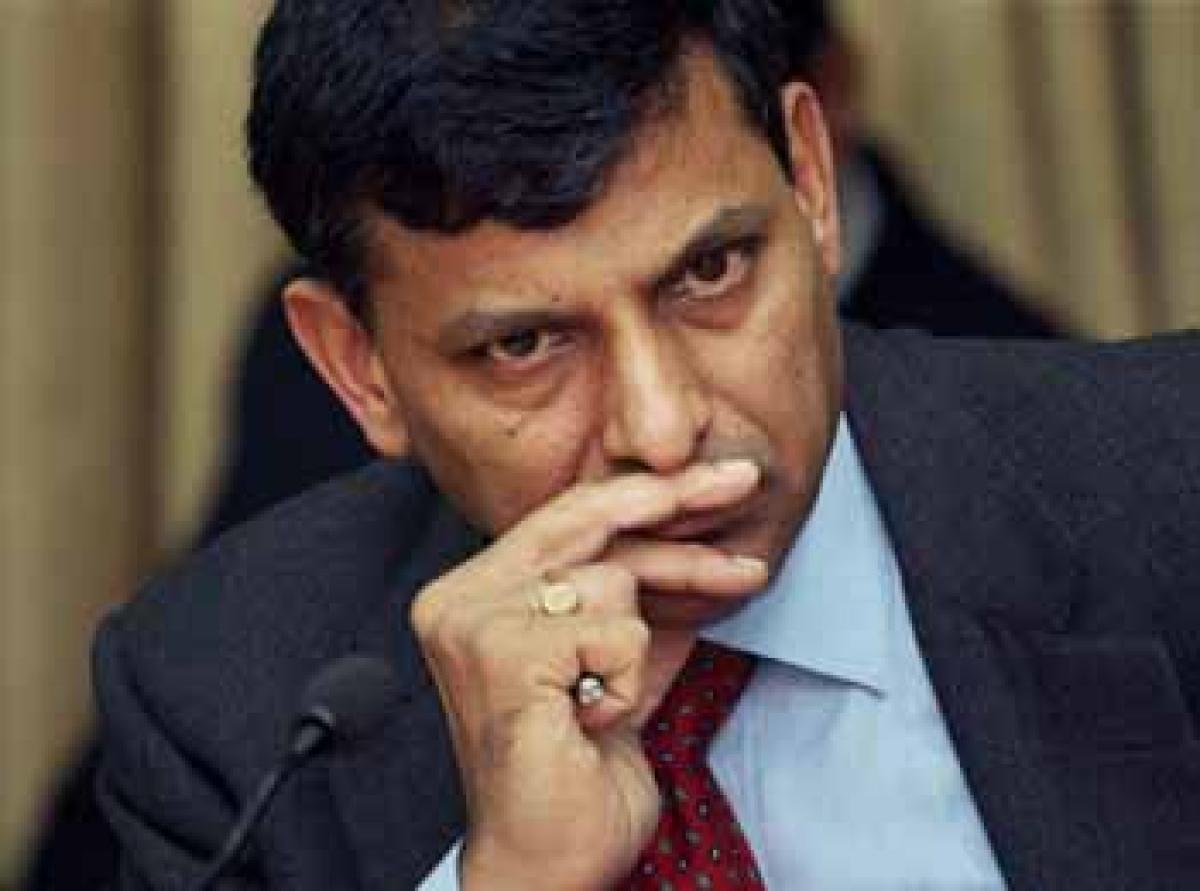Live
- VP Dhankhar urges corporates to invest in education
- Punjab DGP, MHA official request farmer leader Dallewal to end 20-day fast
- Stage Collapse During Swearing-In Ceremony of KUDA chairman in Kakinada
- Govt unveils ‘Jalvahak’ to boost inland waterways
- List of criminals: Delhi BJP chief on AAP panel of 38 candidates
- PSBs in India clock record Rs 1.41 lakh crore in net profit in FY24
- Telangana Government Announces Key Development Plans: Bhatti Vikramarka
- Crackdown on illegal poppy farming in Manipur: Assam Rifles destroyed 6,228 acres in 5 years
- South Korea's ruling party leader cancels press conference amid calls for resignation
- AIADMK's big meet discusses 2026 polls, prospective alliances
Just In

Time for Rajan to act with alacrity. Rajan may or may not agree with the easy monetary policies in the Euro zone, the US and Japan. But in crisis times, he must adapt to pick up some smart strategies from his counterparts.
.jpg) Rajan may or may not agree with the easy monetary policies in the Euro zone, the US and Japan. But in crisis times, he must adapt to pick up some smart strategies from his counterparts. Like the Bernanke put, Draghi's put or his "whatever his takes" comment and the Bank of Japan's Kuroda put, Rajan must immediately provide the Indian economy with a 'Rajan put.’
Rajan may or may not agree with the easy monetary policies in the Euro zone, the US and Japan. But in crisis times, he must adapt to pick up some smart strategies from his counterparts. Like the Bernanke put, Draghi's put or his "whatever his takes" comment and the Bank of Japan's Kuroda put, Rajan must immediately provide the Indian economy with a 'Rajan put.’
It's like 2008 again. But during such times, it is important to remember that there was a March 2009. Looking at the price action on August 24 , particularly during the US session, where the Dow tumbled by almost 1,000 points (although the closing was not so bad) and the wild moves in currencies, especially the euro and the yen, there surely looks to be more pain ahead for the financial markets.
After almost two decades since the Asian crisis, it is the emerging market space, especially China, which is dictating markets in the developed world. Emerging market currencies are near 'crisis valuations' against the dollar while the Dollar Index is getting hammered as US 10-year yields trade at two per cent, implying that a September Fed liftoff is certainly off the table.
What is even scarier is the fact that the recent sell-off across global equities has also been built upon a global growth scare. So, even if China launches a huge stimulus package, a sharp rebound will most likely be sold into. The RBI, unlike its western counterparts, who are already in quantitative easing (QE) mode and at the zero-bound, has sufficient ammunition to stabilise the free fall in the Indian markets.
It took capitulation in the financial markets for RBI Governor Raghuram Rajan to come out and finally sound slightly dovish and admit that interest rates should fall further in the current macro environment. He also reiterated that our vast forex reserves could be used to defend the rupee depreciation.
Although delayed, his comments on rate cuts will surely restore some sense of calm and confidence in our financial system. owever, Rajan must be careful about his timing when it comes to defending the rupee. Having failed to cap the USD/INR upside at 65-66, he should let the market take rupee where it wants to till the US Fed rate hike.
It is only when the market has more clarity on the Fed hike (which now seems to be in December) will the dollar strength resurge. Further, even speculators will find it hard to go aggressively short at the rupee at these levels as we cannot be clubbed together with the export-oriented "tiger" economies.
So, keeping the old 'don't fight the Fed' rule in mind, the rupee is best left untouched now and should be guided by market forces alone. Rajan may or may not agree with the easy monetary policies in the Euro zone, the US and Japan. But in crisis times, he must adapt to pick up some smart strategies from his counterparts.
Like the Bernanke put, Draghi's put or his "whatever his takes" comment and the Bank of Japan's Kuroda put, Rajan must immediately provide the Indian economy with a 'Rajan put'. This should of course start with a 50 basis point rate cut. In times like these, economies and markets decouple only when policymakers take urgent steps. There is no point playing catch up with contagion.
By Vatsal Srivastava

© 2024 Hyderabad Media House Limited/The Hans India. All rights reserved. Powered by hocalwire.com







